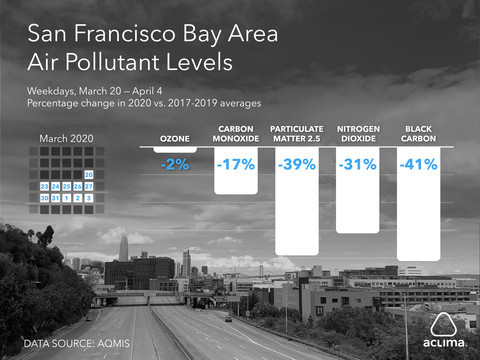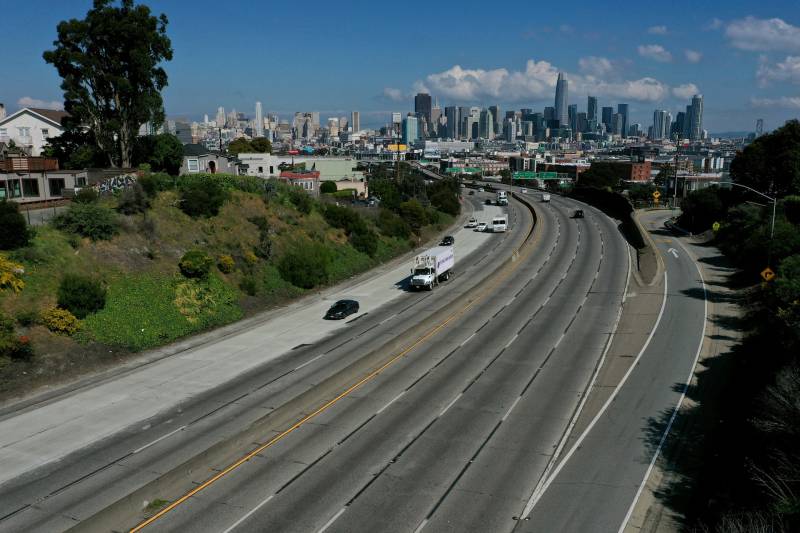But Roselius said the estimate is likely “conservative” and traffic could have dipped by even more, though she cautions that researchers need to see more data before they can detect an actual trend.
The Port of Oakland says shipping traffic was down 11% in March. That could also contribute to a reduction.
Of course, weather plays a major role in local air quality. A persistent low-pressure system hovering over Southern California has kept the air crisp and clear, according to Rick Canepa, a meteorologist with the National Weather Service in Monterey.
The pressure system brought blustery, rainy conditions to the region in late March and early April, one reason for the puffy cloud formations the last few weeks.
Aclima, a San Francisco-based air quality mapping startup, says that Bay Area pollution levels have continuously declined since March 17, when many counties initiated stay-at-home orders, according to Meg Thurlow, the company’s vice president of Sensing Systems and Applied Science.
“We continue to see the same large-scale changes that we have been seeing in air pollution across a variety of pollutants, especially those associated with traffic and fossil fuel combustion,” said Thurlow. (Aclima is publishing the results in posts like this.)

This is especially true in West Oakland, a neighborhood bounded by freeways and the port.
The West Oakland Environmental Indicators Project and other advocacy groups have long noted punishing air pollution and high local asthma rates, which they say are caused by toxic diesel fumes from trucks driving in and out of the port.
Aclima is tracking a reduction in the region’s carbon footprint using aggregated data from air regulators, as well as sensors, including some attached to low-emission cars.
Since 2015, Aclima has mapped air quality in West Oakland and noted higher pollution levels compared to the broader Bay Area. Thurlow said that West Oakland’s carbon dioxide levels have dropped below the Bay Area regional average during the coronavirus crisis.
She said the reduction in pollution provides “a really positive indicator to people that our actions are important with respect to air quality.”
“But this is a brief reprieve when there’s a lifetime of pollution disparities that have existed throughout a lot of our communities.”


